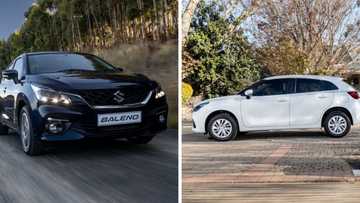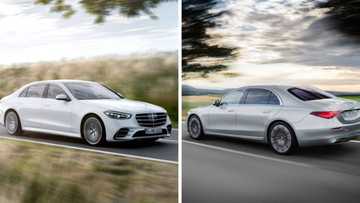Volvo and Epic Games Bring Real Time Photorealistic Visualisation Inside Next Gen Volvos with Unreal Engine
- Volvo Cars are bringing photorealistic visualisation technology into its next generation of electric cars through a new collaboration with Epic Games
- The companies are teaming up to bring Epic’s Unreal Engine game engine into upcoming Volvo cars, providing unparalleled high-quality graphics inside the cabin
- Epic Games is a leading interactive entertainment and software company probably best known for Fortnite, one of the world’s largest game
PAY ATTENTION: Follow Briefly News on Twitter and never miss the hottest topics! Find us at @brieflyza!
Epic Games also develops Unreal Engine, widely considered to be the most advanced real-time 3D creation tool used in various industries beyond games, and which will now be used by Volvo Cars for developing digital interfaces inside its cars and rendering real-time graphics in the car.
Volvo Cars is the first European carmaker to use the Unreal Engine for the development of the Human Machine Interface (HMI). More specifically, it will initially focus on the Driver Information Module (DIM), one of the displays inside the cabin that provide the driver with relevant information and infotainment features.

Read also
Land Rover has unveiled it flagship Defender 130 model that offers seating for up to 8 people

Source: UGC
According to MotorPress, in the next generation of Volvo cars, customers will encounter impressive, high-quality graphics on those displays. Much sharper renderings, richer colours and brand new 3D animations are only the first steps as Volvo Cars developers continue to push the graphic envelope.
Henrik Green, chief product officer at Volvo Cars says:
PAY ATTENTION: Never miss breaking news – join Briefly News' Telegram channel!
"To offer our customers the best possible user experience and contribute to a safe and personal drive, we need rich, immersive and responsive visualisation inside our cars, running Unreal Engine in our cars enables this and makes it even more enjoyable to spend time inside a Volvo."

Source: UGC
By coupling the Unreal Engine with the high-performance computing power of the third generation Snapdragon Cockpit Platforms, the next generation of Volvo cars will set a new standard in graphics and infotainment system performance.
As a result, Volvo Cars’ next-generation infotainment system will be more than twice as fast as its predecessor, while graphics generation and processing inside the cabin will be up to ten times faster.

Source: UGC
The first car to contain the new graphics is the new, all-electric flagship model that Volvo Cars will reveal later this year. That model is the first of a new generation of all-electric Volvo cars as it aims to only sell pure electric cars by 2030.
Further, in the future, the company sees additional opportunities for Unreal Engine to advance other areas of technology within new Volvo cars, as Volvo Cars developers continue to explore new applications for this and other software-driven technology platforms while always keeping safety front of mind.
Volvo Cars have the ambition to develop half of all the software inside its cars in-house by mid-decade and are recruiting extensively within software development. By joining the company, coding talent has numerous opportunities to work on exciting and groundbreaking new in-car applications and platforms.
Ford is using connected tech to hopefully phase out speed signs
Ford connected tech could make streets simpler, safer and easier on the eye, help drivers avoid costly speeding fines and reduce the need for speed signs, Briefly News reports.
Geofencing technology creates a virtual area where vehicles slow down, rather than relying on drivers spotting signs that may be on unfamiliar routes, or overgrown. Speed is a key contributing factor in road accidents: 30km/h geofenced zones for schools, hospitals and shopping areas could greatly reduce the risks to all road users.
The test trial in Cologne, Germany, uses an all-electric Ford E-Transit and Tech could in the future work with its commercial and passenger vehicles.
Source: Briefly News



